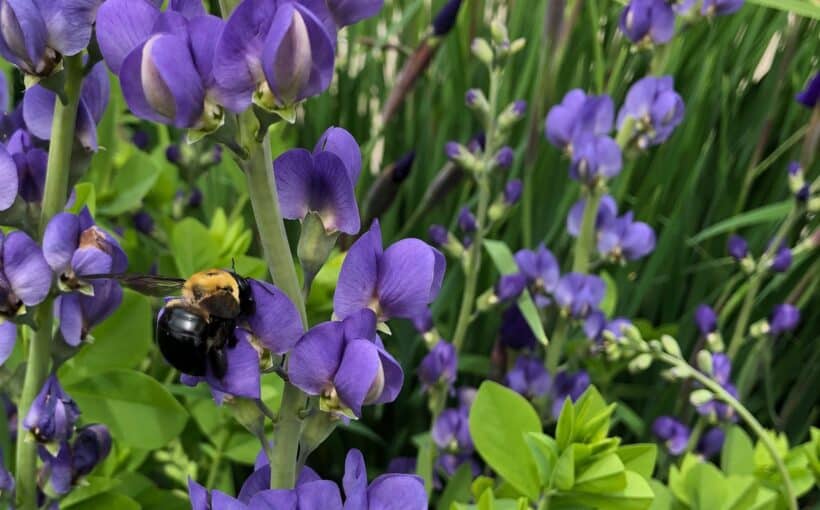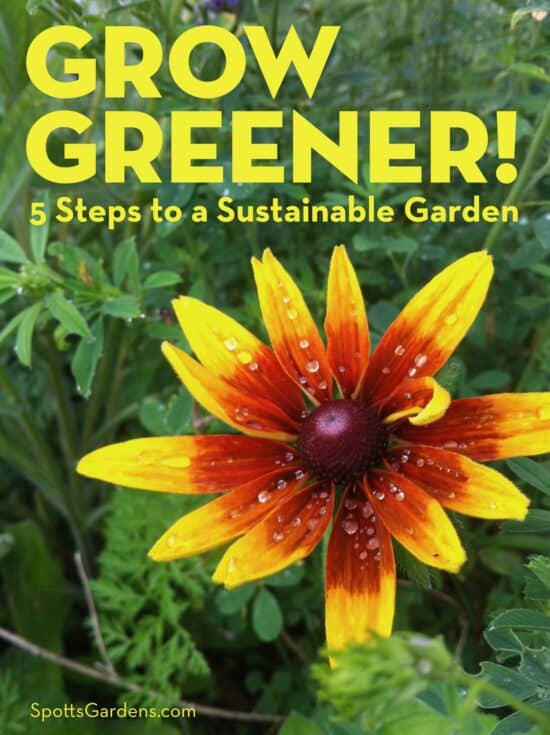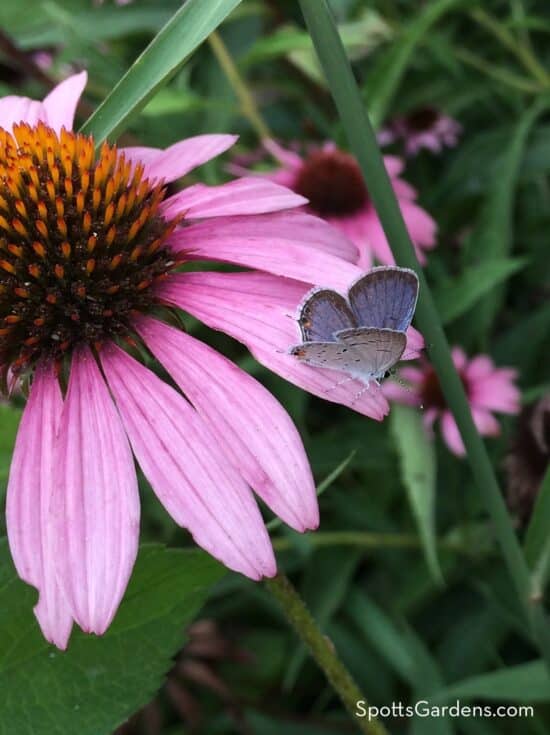These steps make it easy to create a sustainable garden that’s good for you and for the planet. You can conserve soil and water, welcome wildlife, and enjoy a beautiful landscape too!
1. Kick the chemical habit.
Synthetic fertilizers and pesticides are expensive, run off into our water supplies, reduce biodiversity, and encourage wussy plants. Choose organic strategies for weed and pest control instead.
- What to do: Manage weeds by planting heavily to shade out invaders; laying down hardwood mulch, straw, or chipped leaves until plants grow in; and hand weeding.
- What to do: Reserve herbicide for careful, selective use only against invasive plants that don’t respond to other methods. We can advise you on what to use (or apply it for you).
- What to do: If you currently have a lawn service, ask about switching to an organic system. Or replace your monoculture lawn with a mixed-species play lawn.
- What to do: If plants need a boost, use organic fertilizers like bonemeal, blood meal, and fish emulsion.
2. Build soil with compost and mulch.
Soil enriched with compost holds water better and makes more nutrients available to plants. Organic mulch helps slow moisture evaporation, reduces weed pressure, and breaks down to improve the soil’s structure.
- What to do: Add some compost around the plants in your garden beds and gently scratch it into the soil.
- What to do: In late fall, spread a layer of compost over your kitchen garden beds.
- What to do: Once the soil warms (no sooner than mid-April in central Indiana), add 2″ to 4″ of organic mulch—hardwood mulch, chopped-up leaves, or straw—to your garden beds.
3. Put the right plant in the right place.
Stressed-out plants are more likely to suffer from disease and pests. So choose plants that are appropriate for your space’s sun exposure, soil type, and moisture level.
- What to do: Watch your plants this year for signs of stress, and don’t be shy about digging up and moving plants that might do better elsewhere. Check out this post for more about how to assess your site.
- What to do: Use native plants whenever you can! They increase biodiversity and support more pollinators than non-natives do.
4. Use water wisely.
The average garden needs 1″ of water a week—and that includes the lawn. Plants will tell you if they need water by wilting.
- What to do: Water only when necessary, and then water deeply and irregularly.
- What to do: Stop stormwater runoff with rainscaping strategies that get water back into the ground.
5. Welcome wildlife.
A robust garden has a wide variety of plants that welcome microbes, insects, birds, reptiles, and small mammals. If a big enough population of insects starts munching on your plants, something else will move in to start munching on them.
- What to do: Don’t panic over signs that insects are eating in your garden. Most of them are either harmless or actually good for your garden!
- What to do: Plant for pollinators by choosing native plants that provide pollen, nectar, and habitat.
These easy first steps can help you create an organic oasis. So this year, make your garden sustainable!
Ready to Get Green?
Have you already taken these sustainable steps? That’s great! You might be ready to Make Your Garden Better: Seven Ways to Improve Your Garden Game.
We can help you create an earth-friendly outdoor space that’s perfect for you. Contact us to schedule a garden visit today!


